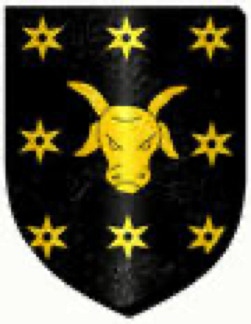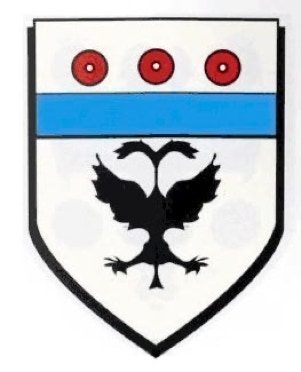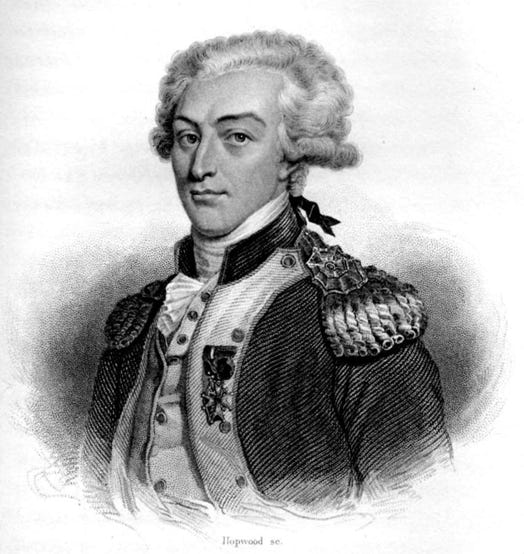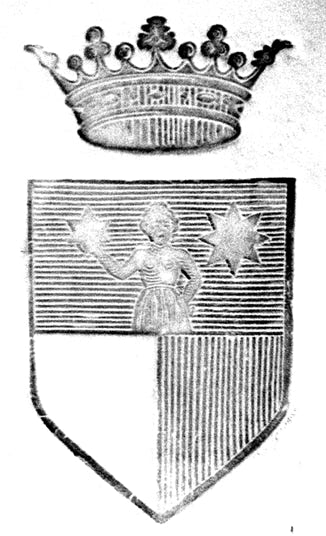Our Manor, located at a place called Goaz Froment, near by Lannion, is steeped in history through its lordly past. Lafayette is said to have stayed here. Its origins date back to 1427, the current manor was built at the end of the 16th century, then became at the beginning of the 19th century a farm. Today, it is a living place: our place of residence, our artists' studio with future exhibitions and a self catering cottage far from the hustle and bustle of cities 20 minutes from the sea. The association “Les amis du Manoir ”offers cultural events (guided tours, concerts, etc.).
Here is a short description of the Inventaire du patrimoine culturel en Bretagne (Inventory of Cultural Heritage in Brittany):
The manor, the main facade of which faces south-west, is in the immediate vicinity of a spring and two ponds for flax retting, listed on the 1835 cadastre, which feed a small tributary of the Léguer river.
Owners of the seigneury, we know:
Bœuf (le), sr (Lord) of Goasfroment and Kerminihy, parish of Plouaret. Yves, son of Alain, wife before 1535 Marie Taillart. (source “Nobiliaire et armorial de Bretagne”)
Yves Le Bœuf (Le Beuff) (1569-1648), Lord (seigneur) of Goaz Froment and Kerminihy in the parish of Plouaret ; he married in 1600 Augustine Cariou de Goasven (1570-1633).
Their son: François Le Bœuf (around 1620-1696) first married, Julienne Rospabu (born in 1622) and second married Françoise Coupé (around 1625-1712).
Julienne Le Beuff is on August 5, 1696 godmother of a bell in the Saint Fiacre chapel which is 600 m from the manor. This chapel did not find a buyer after the revolution and it is in ruins today.
François Le Bœuf, notary, is said to be "squire" and lord of Goaz Froment in the 17th century. Its coat of arms is "sandy to meet a golden ox, accompanied by eight knurls (small piece of furniture in the shape of a hollowed-out star) similarly, 3. 2. 3.".
The current building was built by Yves Le Bœuf between 1598 and 1601 on the occasion of his marriage to Augustine Cariou de Goasven.
It includes provisions and stylistic elements dating from the end of the 16th century or the beginning of the 17th century borrowing a relative modernity: volume, distribution, staircase ramp on ramp contained in a tower making the central pavilion, window size, doors of monumental entrance in semicircular arch decorated with columns and pilasters and each surmounted by a triangular pediment with Renaissance decor...
The main door leads to the vestibule and the staircase crawls on ramp with light niches decorated with shells ; the secondary door opens directly onto the lower room, living and justice room.
Subsequently, openings were drilled in particular in the east gable.
In the middle of the 18th century, the land passed into the hands of Louis Julien Le Lay of Kerverzio and then of Yves Marie Le Lay of Kermaben.
Seized then sold as a National Property (Bien National), the manor was acquired in 1794 by Jean-Baptiste Juste (grandfather of Charles Le Goffic). Born in Versailles in 1746, this former soldier of the French Guards who had served under the orders of Gilbert du Motier, Marquis of La Fayette, was "postmaster" in Lannion in 1784 (person who holds a post relay to horses and who provides, for certain advantages, relays to the cars of the post administration...).
The Marquis de La Fayette would have stayed three months at the Goaz Froment manor in the fall of 1801.
From 1806, the Le Guen farming family occupied the land and remained with their family for 200 years.
In spring 2017, Blanche and Olaf Mühlmann, two designers, acquired Goaz Froment to settle there and have been the sixth owner since its construction. In 2018, they opened the first gîte in the former “Maison du fermier”, carefully renovated, labeled 4 épis and classified 3 stars. Booking is possible direct via our form or via Gîtes de France.
Source partly according to Inventaire du patrimoine culturel en Bretagne
Manoir Renaissance Trégor, Bretagne
Côtes de Granit Rose
Trégor Pays d’Art et d’Histoire
Bibliography to go further:
Christel Douard et Jean Kerhervé, Manoirs Une histoire en Bretagne,
Éditions Locus Sous, Châteaulin, 2021. [p. 174]
Jean-Louis H. Dupré, Le manoir du Traou en Le Merzer,
Auto-édition, Imprimerie de Guingamp, Guingamp, 2003. [p.123-131, couv. IV]
Alain Le Nedelec, Vie de Château d’Armor en Argot,
Éditions L’écho, PointCom Ploumagoar, 2010. [p. 302-305]
Université du temps libre des Côtes-d’Armor, La Poste aux chevaux en Côtes-d’Armor, Les Presses Bretonnes, Saint Brieuc, 1991. [p. 221-233 : Lannion: Le fils du gondolier Jean-Baptiste Juste — troisième propriétaire, Lafayette…]
Christian Kulig et Patrick Worthington, Châteaux et Manoirs, Éditions Trésors du Trégor, Saint-Thonan, 2013 [p. 24, 33, 243, 256] et 2020 [p. 12, 26, 35, 253, 255]
Christian Kulig, Regard sur les épis de faitage en Côtes-d’Armor, Éditions Anagrammes, Perros-Guirec, 2009. [p. 10, 52]
Yves Ollivier, La seigneurie de Kermaben en Plouaret (22),
Y. Ollivier, 2005. [p. 51-56, 62, 63;
Généalogie de la famille Le Beuff — premier propriétaire : p. 208-213;
Louis Julien Le Lay — deuxième propriétaire : p. 62, 63,…]
Websites to go further:
Inventaire du patrimoine culturel en Bretagne (Région Bretagne)
POP : plateforme ouverte du patrimoine (ministère de la Culture)
TV-Trégor : Le Manoir de Goaz Froment (vidéo de 11’01 tourné en 2013)




Ce site web n’utilise pas de cookies,
seulement si vous le souhaitez en cliquant sur notre page de confidentialité.
OK